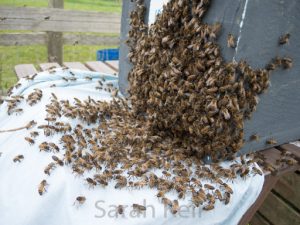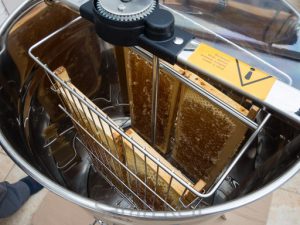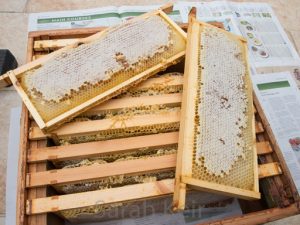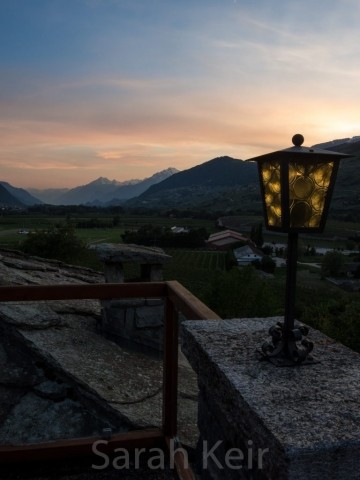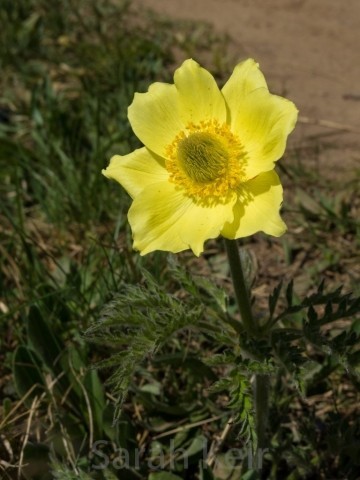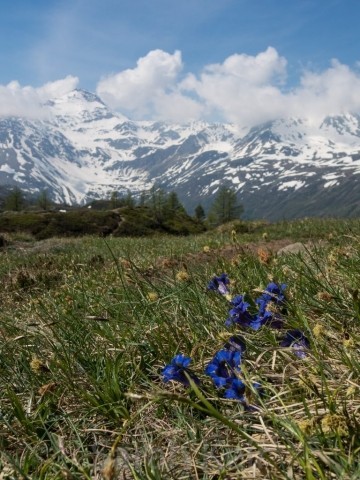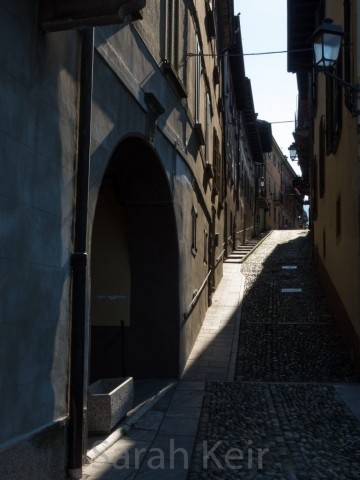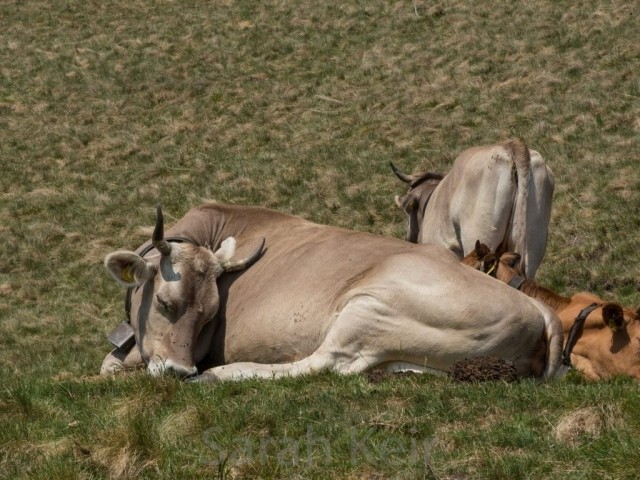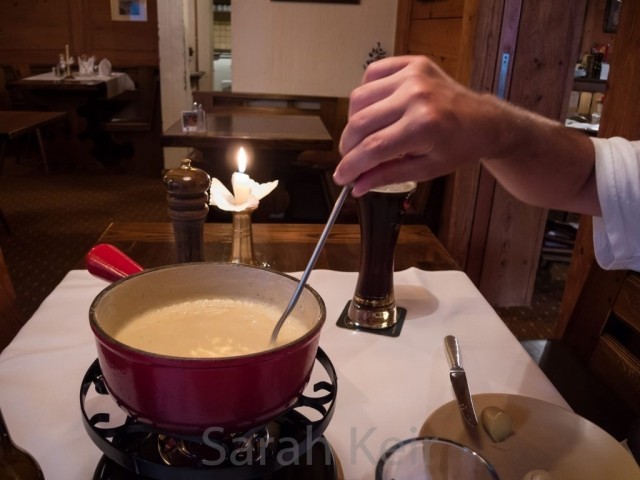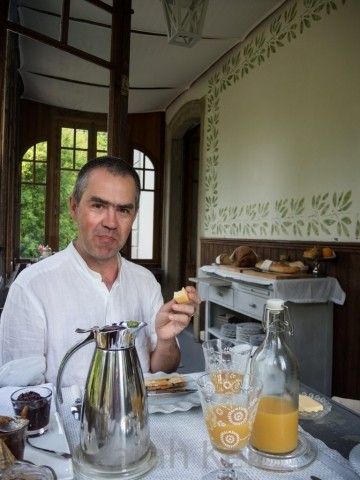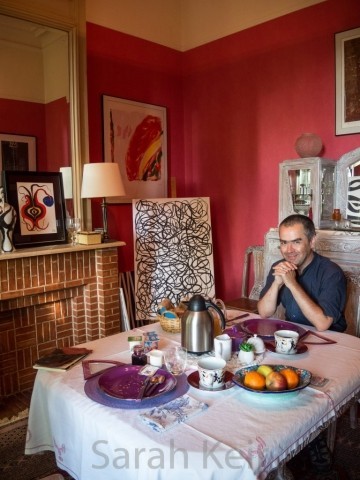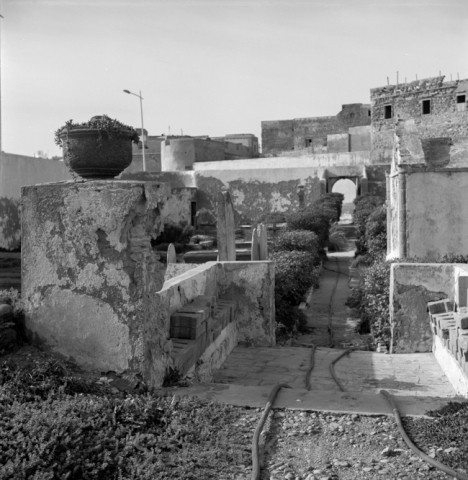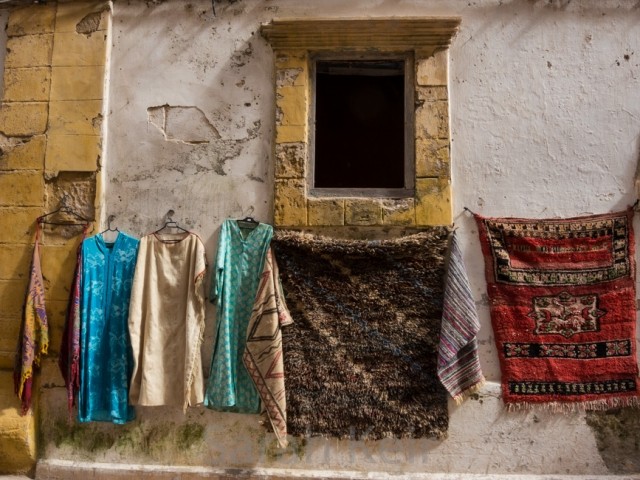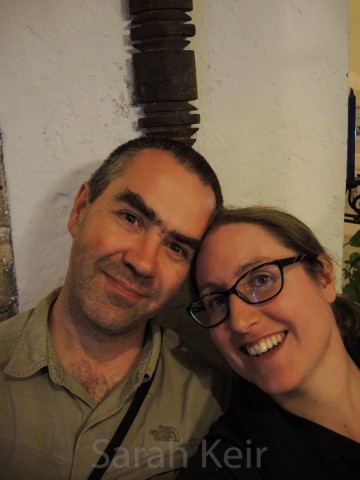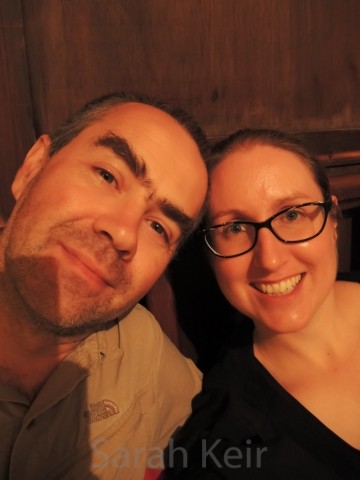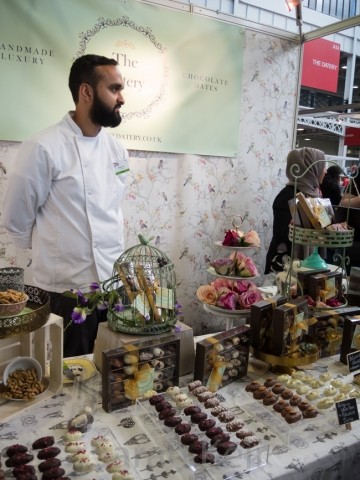After the village show this year, I decided to enter a bigger cake competition to acquire new skills and stretch my existing ones and so I entered the Thame Food Festival Bake Off. I chose to enter a fun category (Lotte’s kitsch cakes, judged by Lotte Duncan), a seasonal one to use up all those apples from the garden (harvest festival happiness, judged by Jane Beedle from the Great British Bake Off) and a challenging category (choux pastry, judged by Chris Wheeler). When I got the cakes to the show this morning (after a hideous 6am start), I was really chuffed with what I had achieved. And then I was even more proud to found that I had won two first prizes! I got these cute star baker medals too!
I definitely had fun with the kitsch cake, thinking of what to do to make it as kitsch as possible but still tasty and then how to make the decorations to complete my vision. I made a cake I titled ‘Little Red Riding Hood in the Black Forest (gateau)’ with my delicious chocolate buttermilk layer cake (recipe here) and Swiss meringue buttercream flavoured with cherry cordial and coloured pink. I made all the decorations except the figurine for Little Red Riding Hood and the squirrel, both of which I found in charity shops. There were Italian meringue trees and bushes, meringue mushrooms decorated coloured white chocolate (recipe here, but I used food colouring powder to colour the white chocolate so it didn’t seize this time), a fondant wolf and a red cape for Little Red Riding Hood, a bowler hat for the squirrel and mini fondant mushrooms and flowers. A few sprinkles and a bit of glitter and it was done! I was really pleased that my cake beat five others in this category, one of the largest in the show.
I must of been mad when I chose something challenging and then chose to make choux! If I had known how difficult this pastry is and how challenging weather would be then I am not sure I would have chosen this category. I must be the only mad one as I was the only entrant in this category! These final eclairs are the culmination of about 10 hours of baking trials and 6 different lots. Different ingredients, different recipes, different piping nozzles, to streusel or not streusel top, different baking temperatures and timings… I will write a full post on what I learnt, even if it is only for prosperity and I never make them again! Today was so humid that within seconds the choux had softened. Anyway, here are my rhubarb, custard and white chocolate eclairs – choux eclairs filled with rhubarb, vanilla cremeux and rhubarb gel topped with white chocolate and a rhubarb twirl.
My harvest cake wasn’t placed but I was still happy with it. I knew I wanted an apple cake but after the flop of an apple cake at the village show (a little too moist), I knew I needed to up my game. It actually took several recipes over several weeks to find one I liked and then tweak it so that it came out how I imagined it. It may not have been placed but I am pleased with it – cinnamon apple cake with honey from our garden and cider soaked walnuts, honey glaze and buttered walnuts and dried apple slices to decorate. Recipe coming up in a future post.
I will need to enter next year and try to win the Magimix Patissier machine, especially as they didn’t even have any for sale at the show! It was definitely challenging weather today as it was so humid that when we collected the cakes, the sugar work was weeping! We had a lovely day going around the stalls, sampling delicious food and drink and spending all of our pocket money!




















